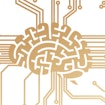
Since 2008, Abba Krieger, Andreas Buja and their colleagues in the statistics department at the Wharton School of the University of Pennsylvania have carried out various statistical analyses on genotype (genetically coded information) and phenotype (outward manifestation of that information) data from individuals with autism.

